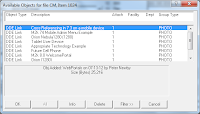- Creating a developer sandbox on your desktop
- Loading the Manage 2000 DAC components and WebControls into Visual Studio
- Configuring Visual Studio to 'see' the Manage 2000 web function wizards
- Where to find out more about Manage 2000 Web Technology and how to use it
You can find answers on all of these topics in Manage 2000 7.3 sp3 on the SYS.WEB.HOWTOS menu:
- SYS.DEV.SETUP describes how to set up your PC for Manage 2000 web function development.
- WEB.VS.TOOLBOX.SETUP describes how to add Manage 2000 Web Components and Controls into your installation of Visual Studio.
- WEB.VS.WIZARDS.SETUP describes how to configure Visual Studio to 'see' the M2k wizards.
And in the related courseware section you will find links to INTRO.WEB.COURSE and ADV.WEB.COURSE which are chock-full of web function development minutia.
But if you want to get somewhere quickly check out the new wizards for generating Visual Studio projects for HyperQueries, Mobile Web, and BTO Posting type functions. These wizards allow you to describe your function in terms of Unidata file names and dictionaries, or in terms of Manage 2000 Business Transactions and then generate for you a working prototype with controls configured and named in useful ways and in some cases with extensive amounts of code-behind already plumbed out.
There are a couple of webex videos available under the Manage 2000 Web Presentations link above on the right. For Visual Studio Manage 2000 web function development knowledge check out Mastering ASP.NET 3.5 and VisualStudio2008 for Manage2000 Parts I and II.
There are a couple of webex videos available under the Manage 2000 Web Presentations link above on the right. For Visual Studio Manage 2000 web function development knowledge check out Mastering ASP.NET 3.5 and VisualStudio2008 for Manage2000 Parts I and II.























